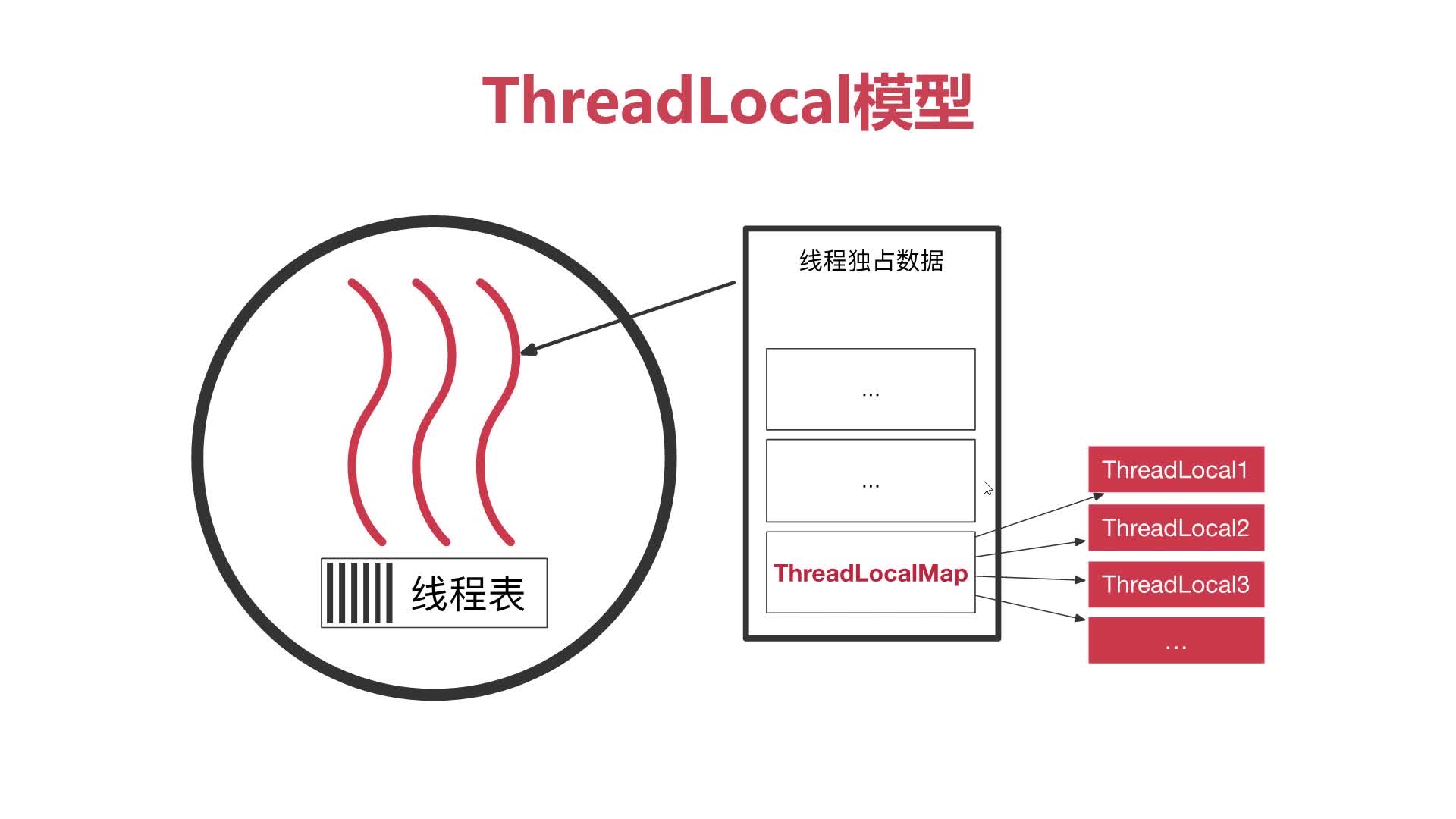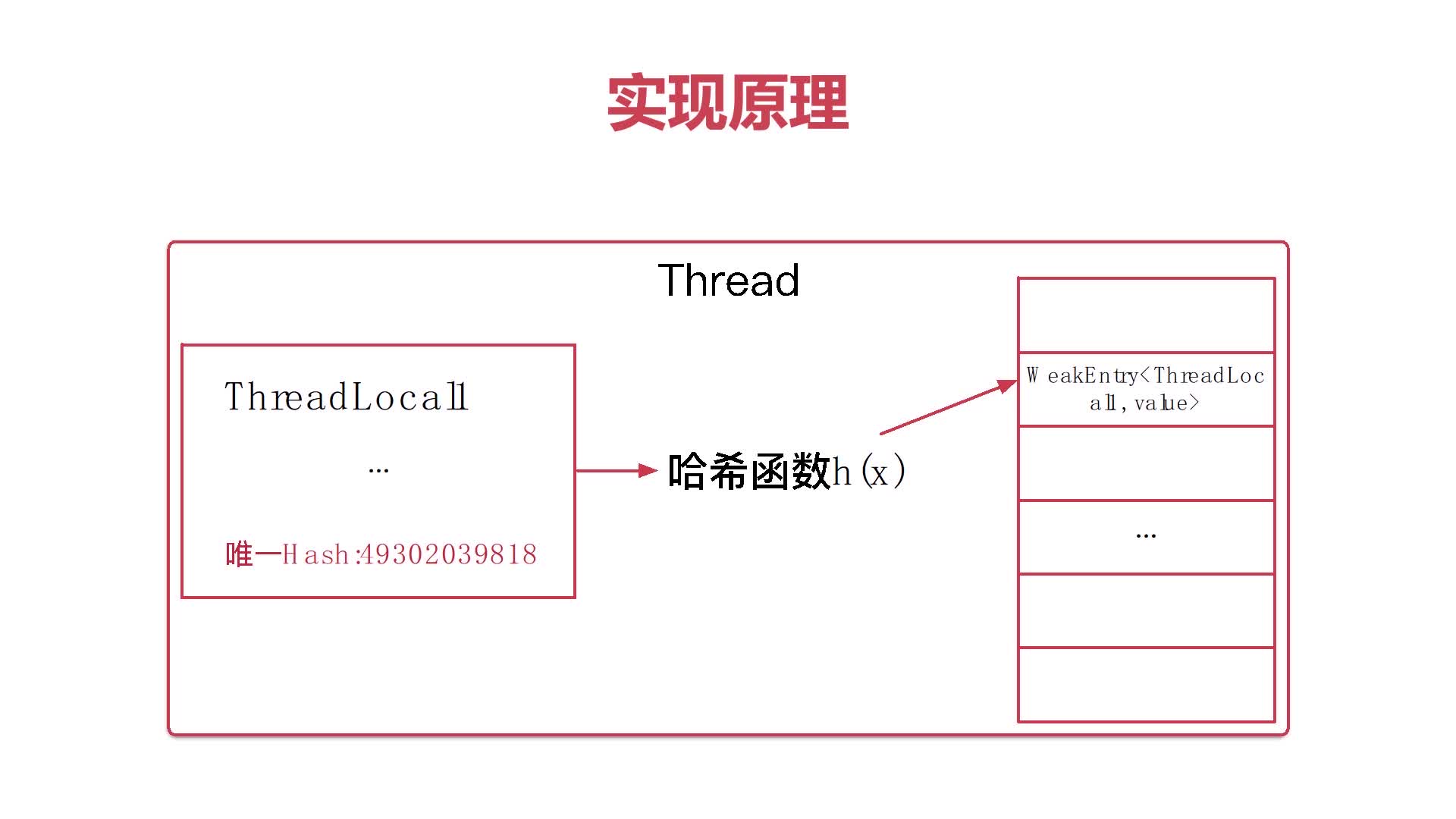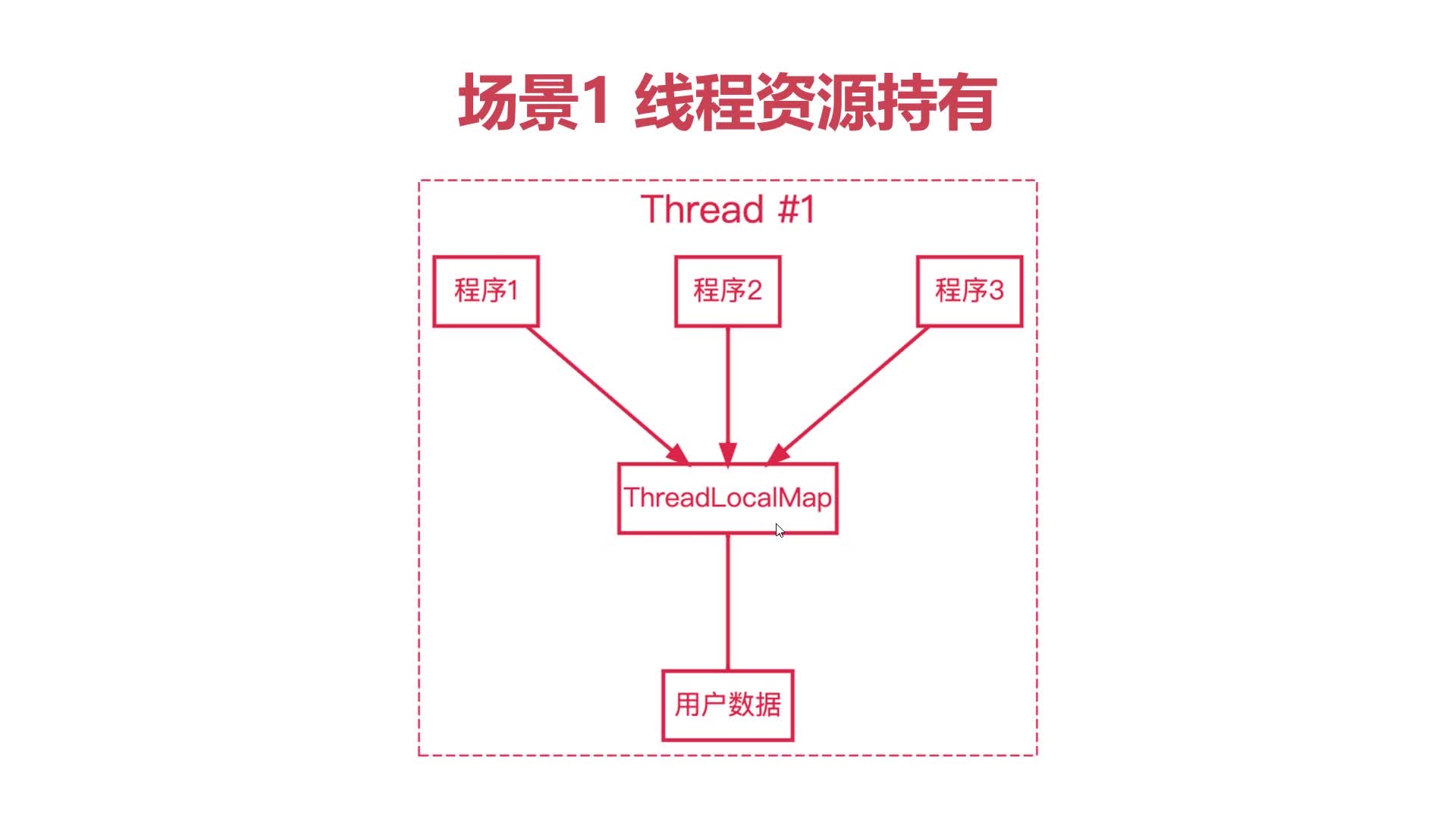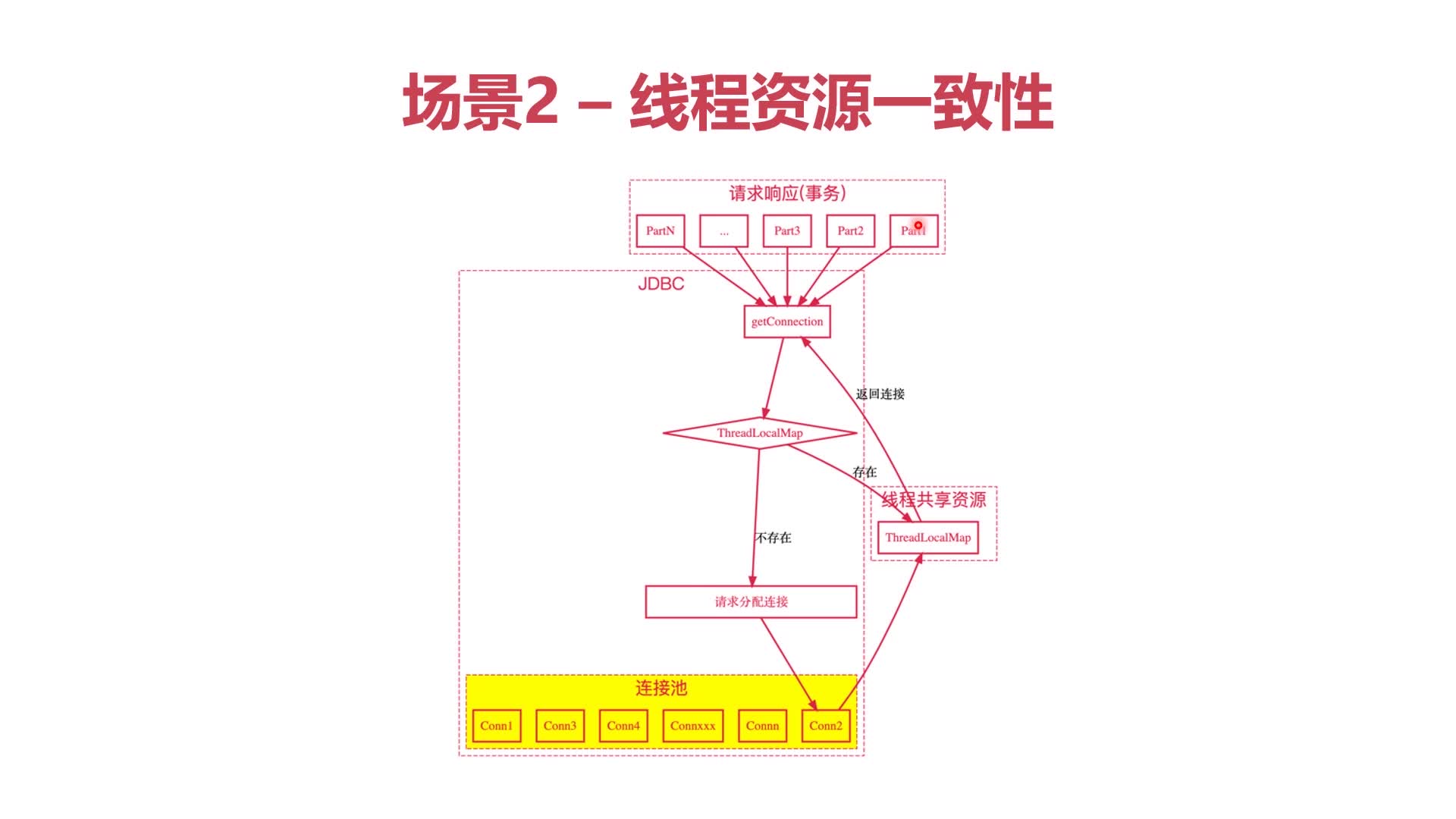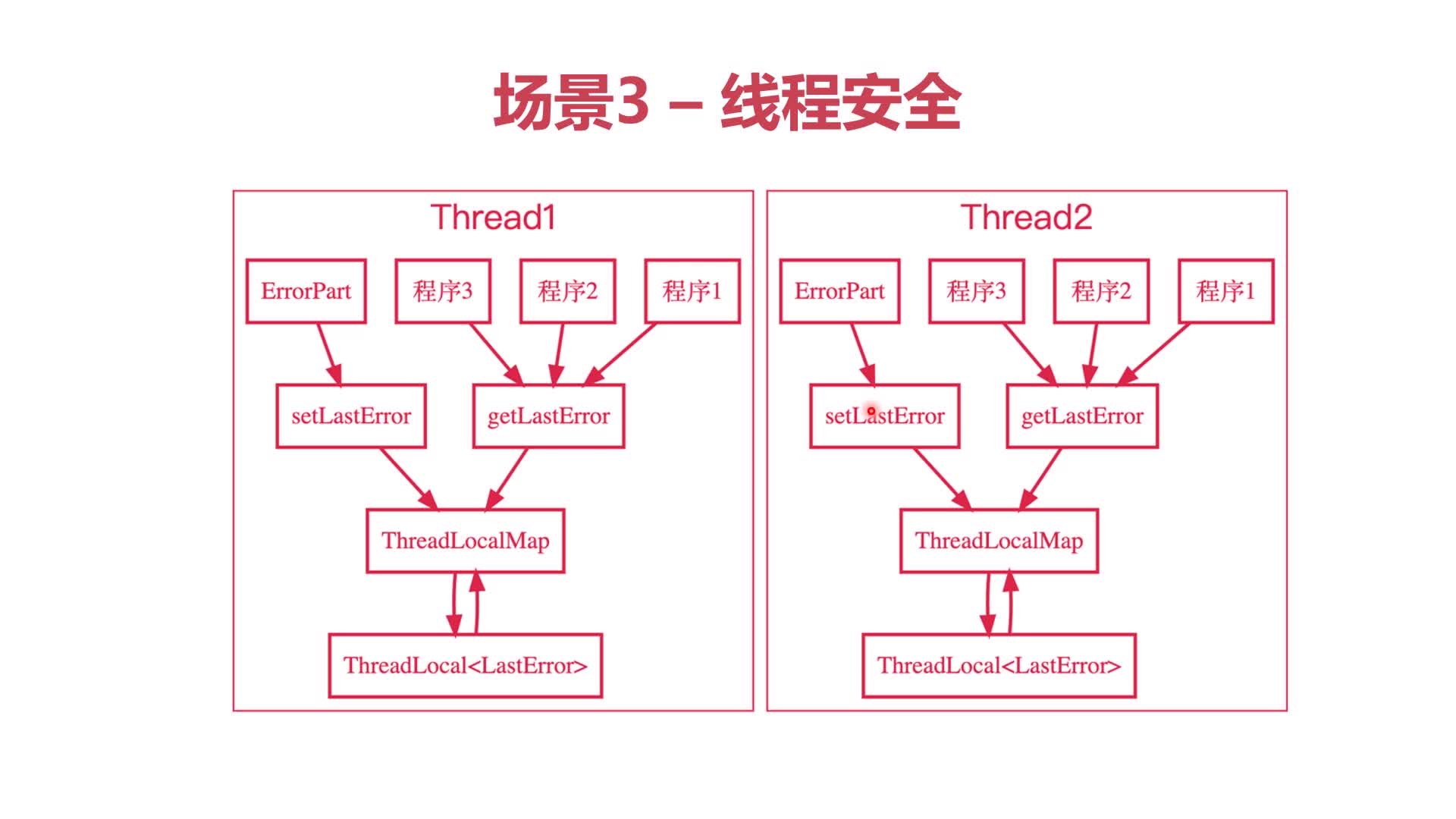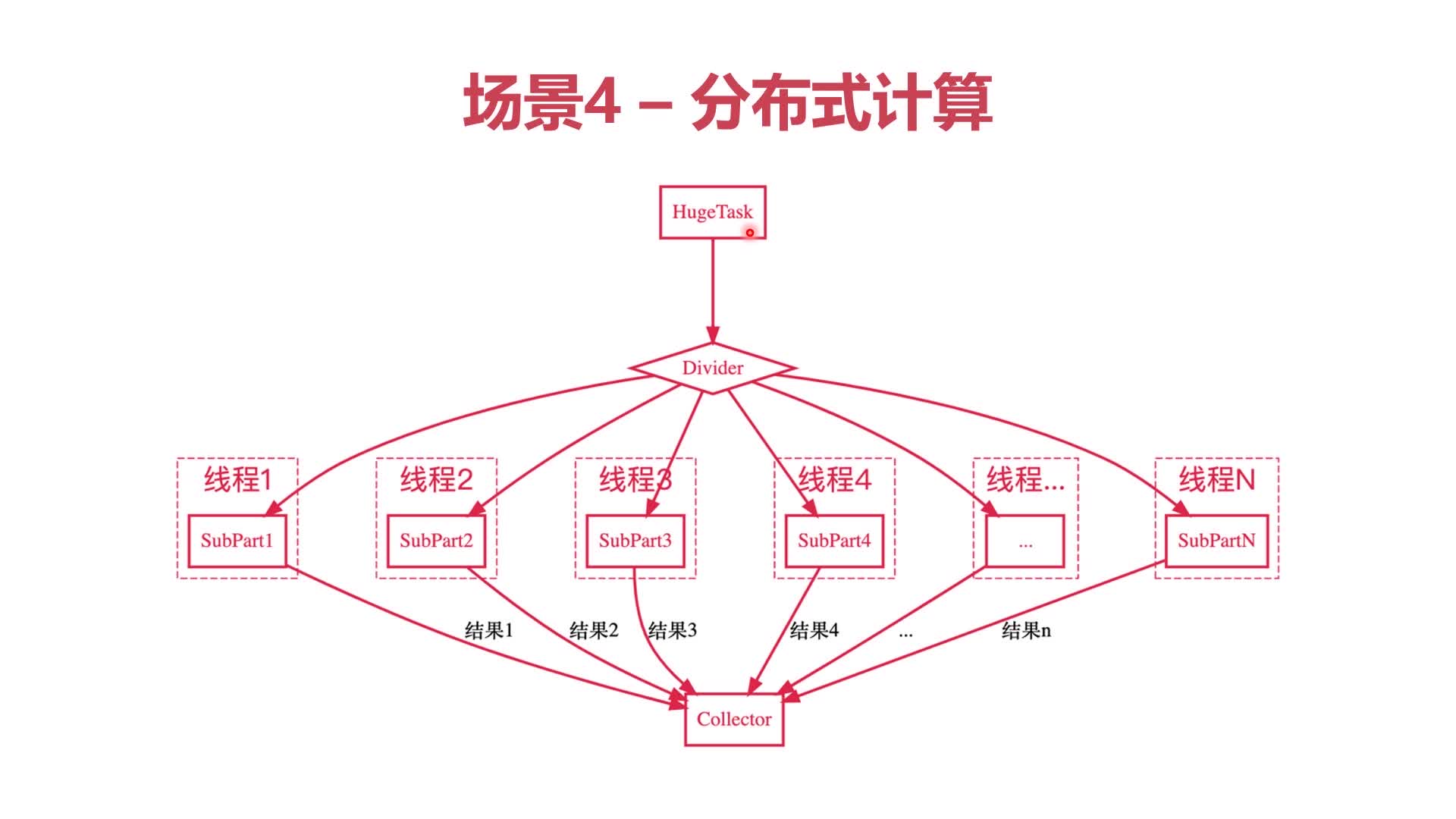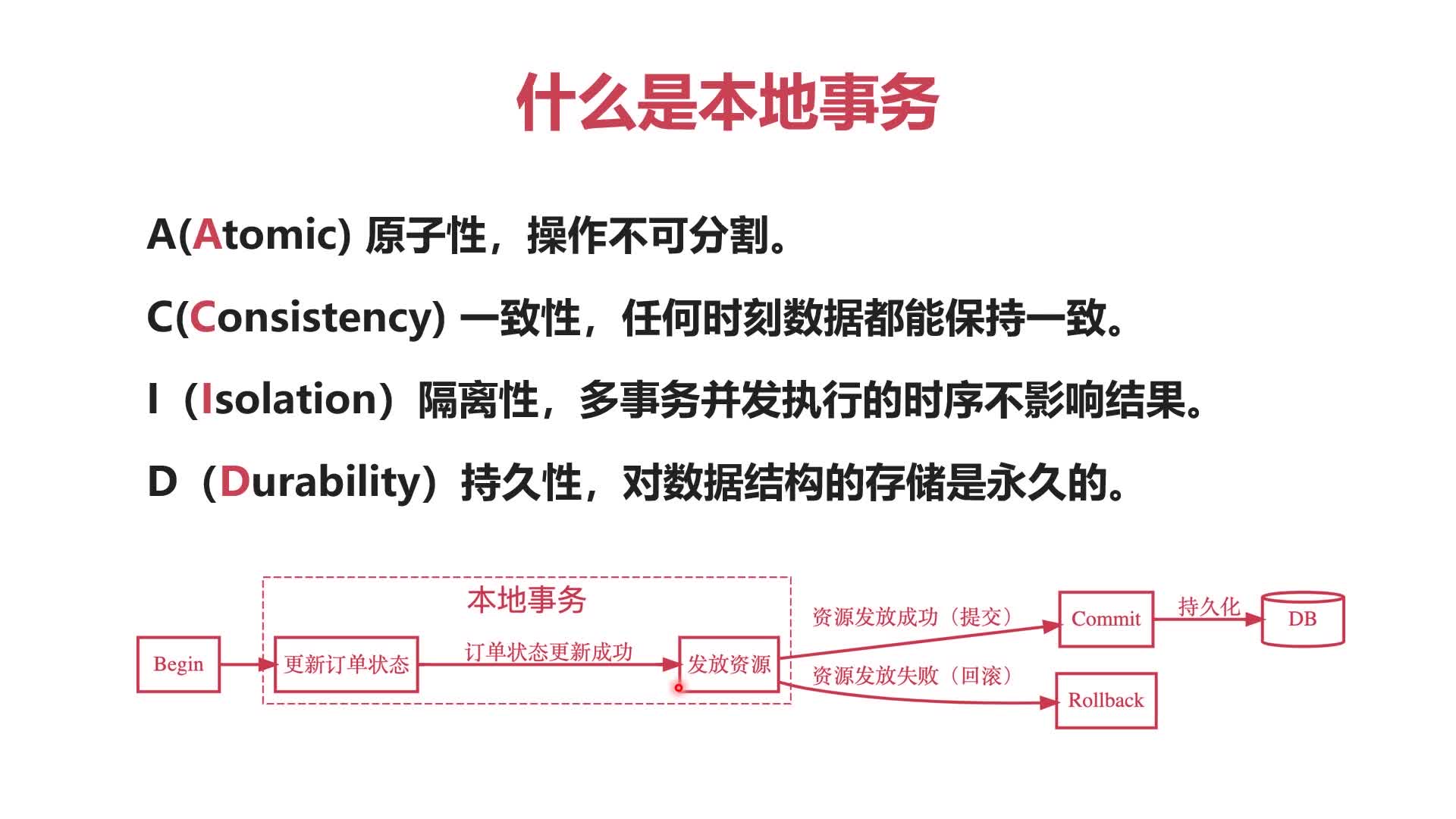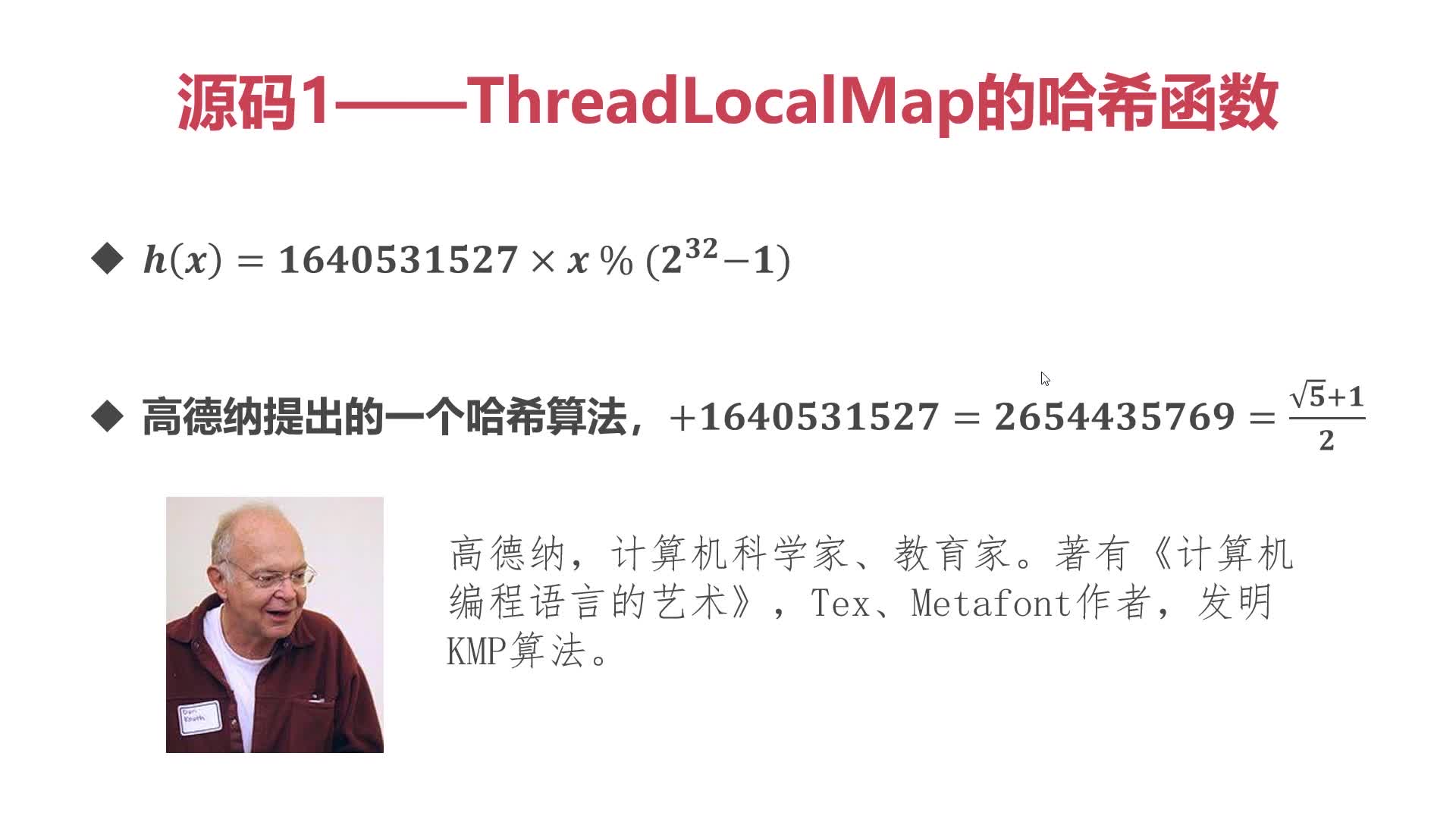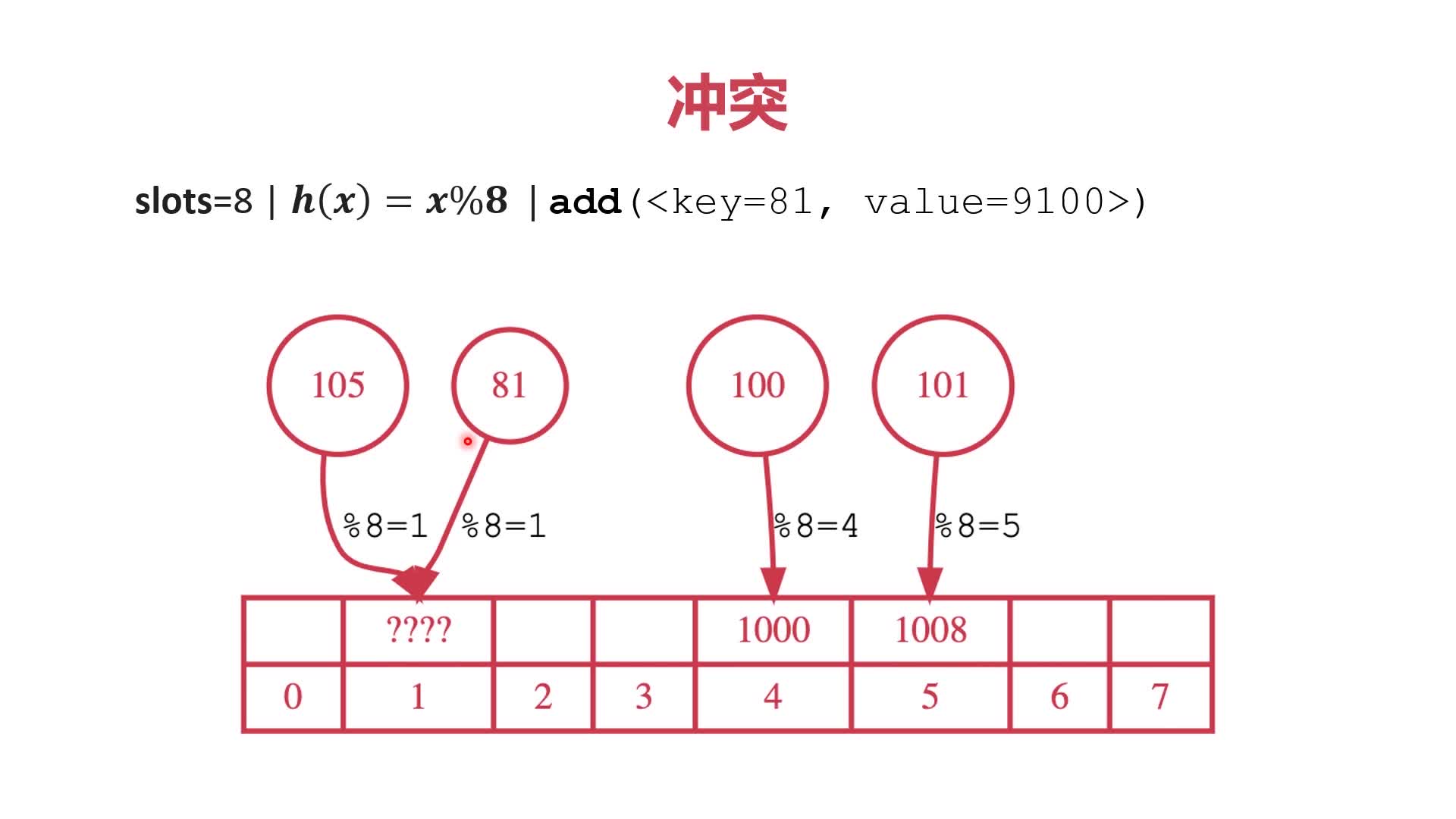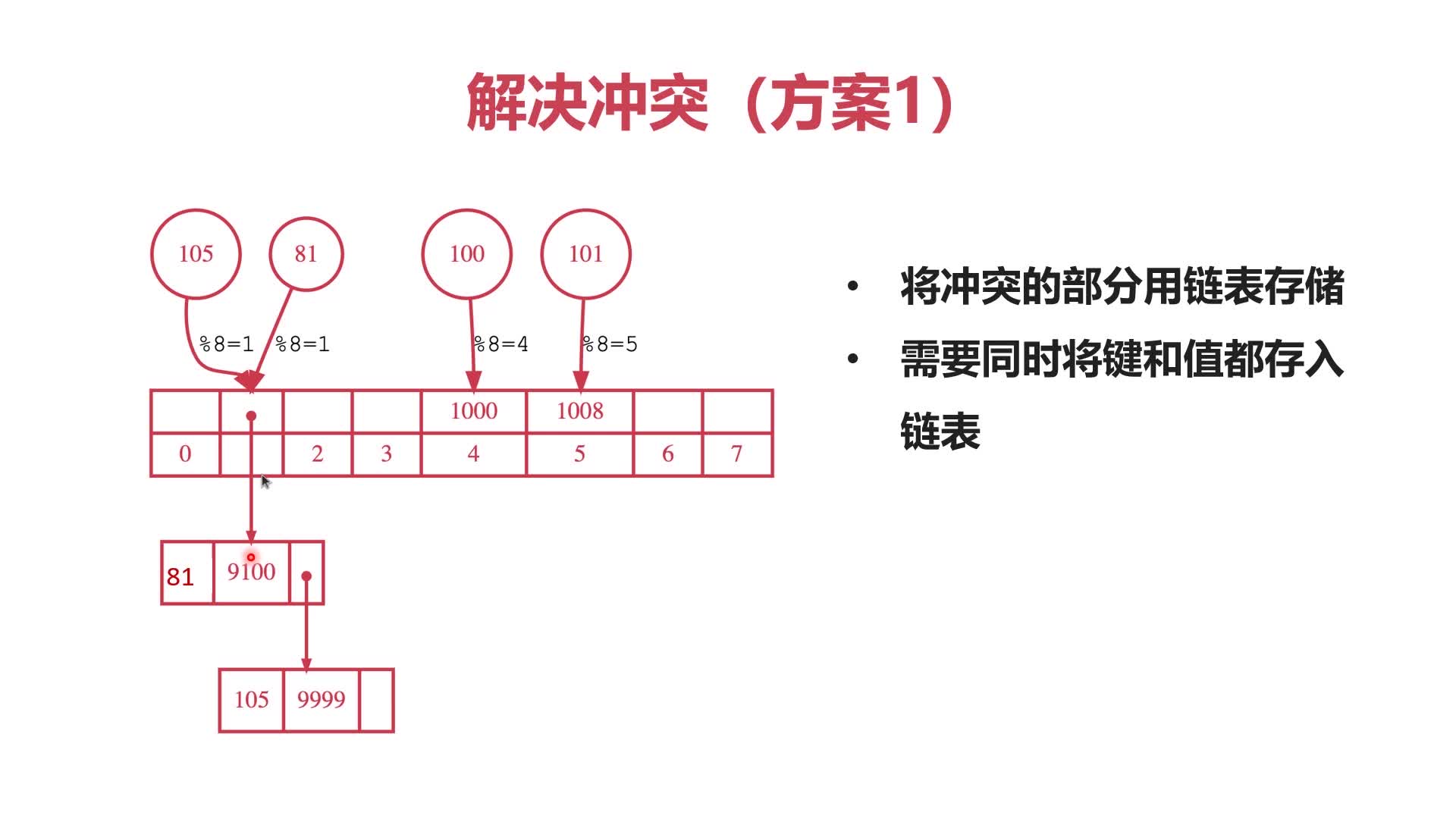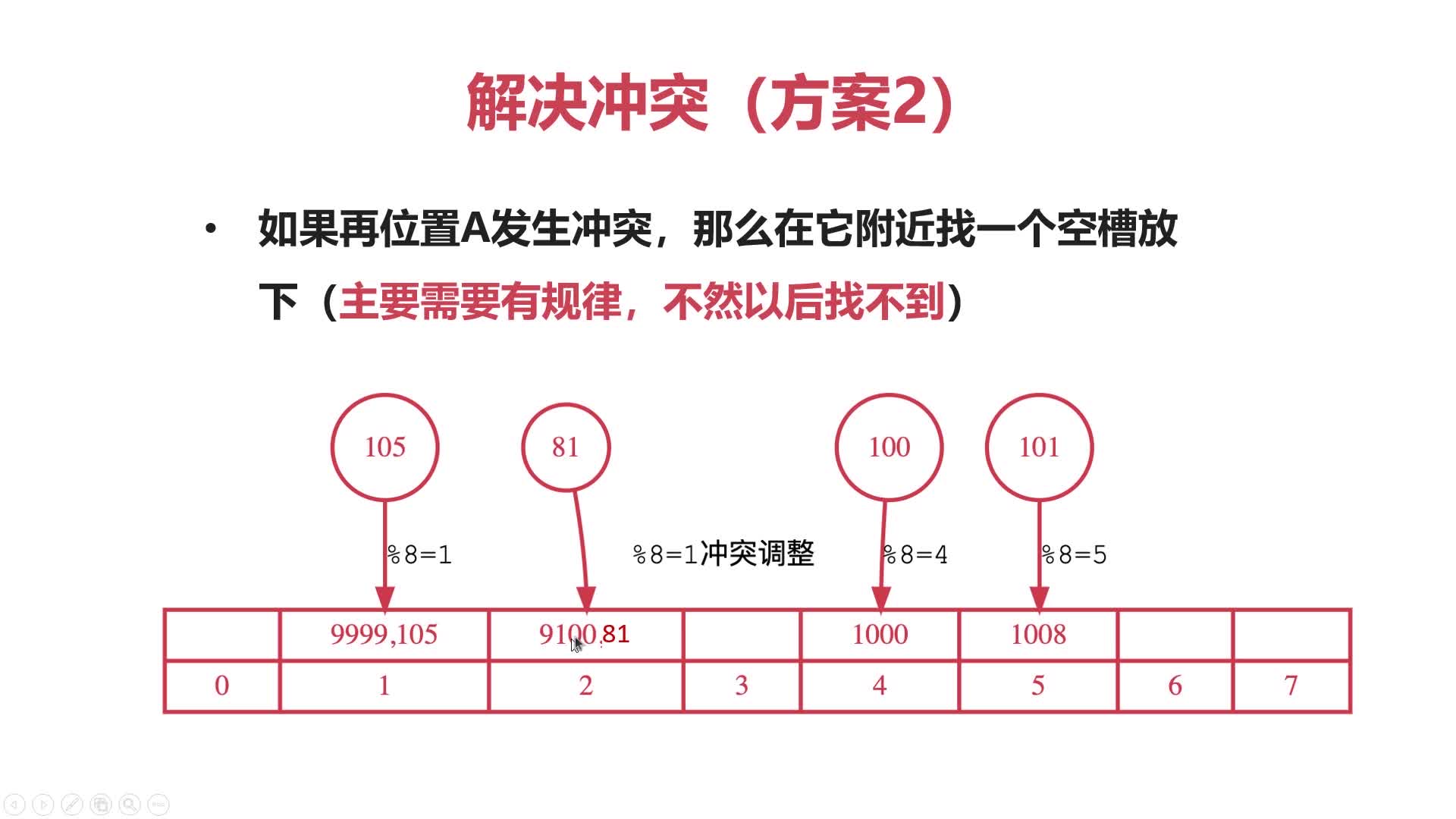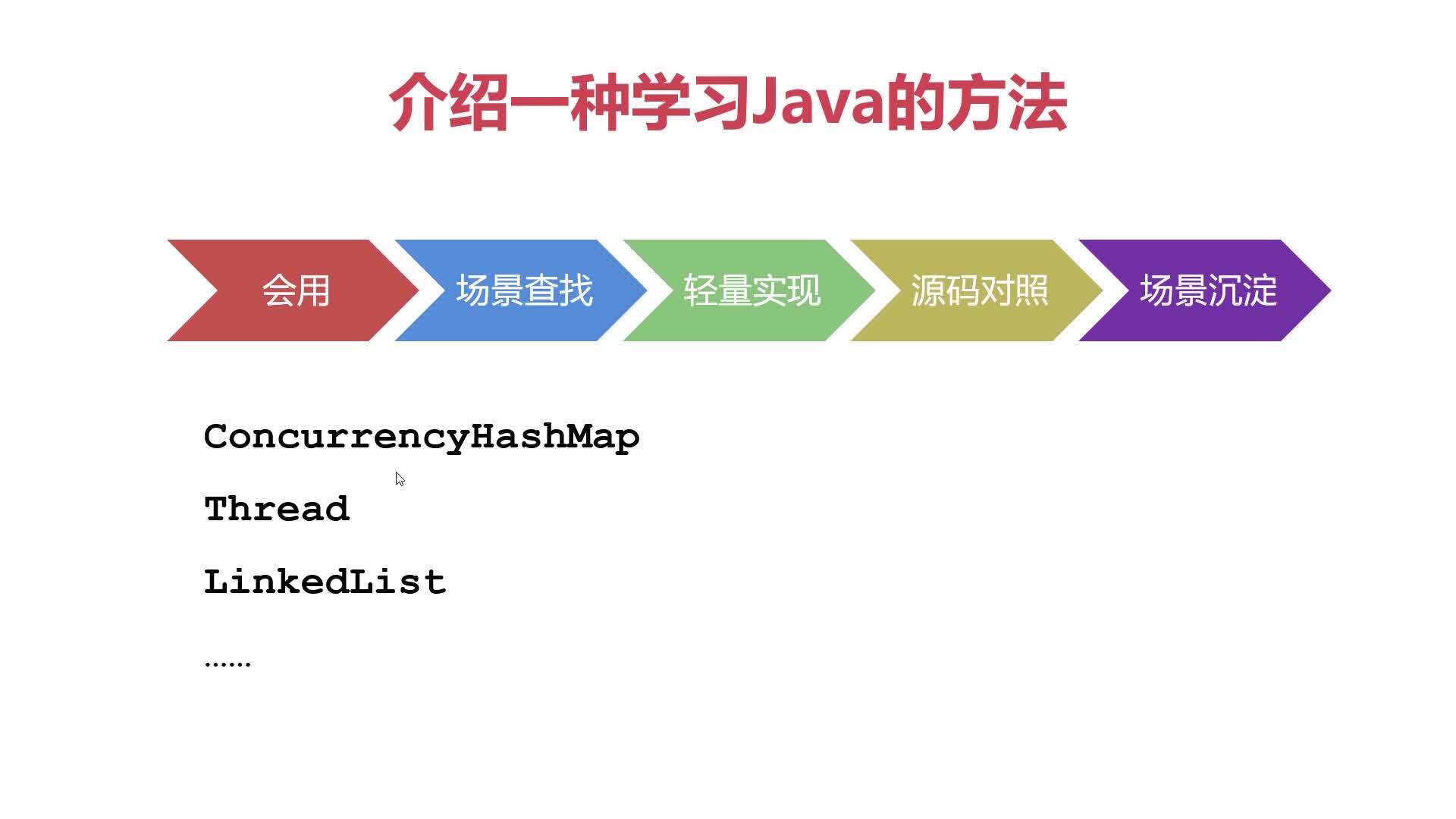一致性问题
- 发生在多个主体对同一份数据无法达成共识
- 包括:分布式一致性问题、并发问题等
- 特点:场景多、问题复杂、难以察觉——需要严密的思考甚至数学论证
一致性问题解决办法
- 排队(例如:锁、互斥量、管程、屏障等)
- 投票(例如:Paxos,Raft 等)
- 避免(例如:ThreadLocal 等 空间换时间的方式)
工作要求
- P4~P5
- 初中级了解基本概念、原理
- 在别人做好的基础上开发
- P6
- 高级应对不同场景、正确使用、结果可预期
- 了解毎种数据结构的正确使用姿势,以及为什么要用
- P7
- 专家、高专深度掌握原理、本质、可改进、可定制
- 为什么要有某种数据结构
- 以及这种数据结构为什么要有这样的内部实现
内容
- P4~P5
- 介绍基础 API
- P6
- 介绍若干个关键使用场景
- 分析每个场景使用
ThreadLocal的作用和必要性
- P7
- 专家带你手写实现一个
ThreadLocal - 并帮助分解其中每个细节设计背后的原理
- 专家带你手写实现一个
总结
- 问题多不是坏事,这让程序员更有价值——我们的生存空间。
- 做长远的学习计划,以终为始,将一致性问题一网打尽—我们的应对策略。
- 重视本质学习是成为专家的必经之路。
定义:提供线程局部变量;一个线程局部变量在多个线程中,分别有独立的值(副本)。
特点:
- 简单(开箱即用)
- 快速(无额外开销)
- 安全(线程安全)
场景:多线程场景(资源持有、线程一致性、并发计算、线程安全等场景)
实现原理:Java 中用哈希表实现。
应用范围:几乎所有提供多线程特征的语言。
场景介绍
- 资源持有
- 线程安全
- 线程一致
- 并发计算
- 设计者追求开箱即用的体验
- 代码写出来是为了阅读,偶尔用于执行
- 构造函数:
ThreadLocal<T>() - 初始化:
initialValue() - 访问器:
get/set - 回收:
remove
public class BasicApi {
public static ThreadLocal<Long> x1 = new ThreadLocal<>();
public static ThreadLocal<Long> x2 = ThreadLocal.withInitial(() -> {
System.out.println("initialValue x2");
return 100L;
});
public static ThreadLocal<Long> x3 = ThreadLocal.withInitial(() -> {
System.out.println("initialValue x3");
return Thread.currentThread().getId();
});
}- get 操作触发
initialValue()函数
System.out.println(BasicApi.x1.get());null- 只有第一次 get 操作会触发
initialValue()函数
System.out.println(BasicApi.x2.get());
System.out.println(BasicApi.x2.get());
BasicApi.x2.set(101L);
System.out.println(BasicApi.x2.get());initialValue x2
100
100
101- 不同线程之间的 ThreadLocal 互不影响
new Thread(() -> System.out.println(BasicApi.x3.get())).start();
System.out.println(BasicApi.x3.get());initialValue x3
initialValue x3
1
22- set 操作不会触发
initialValue()函数 - set 操作不影响其他线程的 ThreadLocal
new Thread(() -> System.out.println(BasicApi.x3.get())).start();
BasicApi.x3.set(107L);
System.out.println(BasicApi.x3.get());initialValue x3
107
22- remove 操作之后再 get 操作,会重新触发
initialValue()函数
System.out.println(BasicApi.x3.get());
BasicApi.x3.set(107L);
System.out.println(BasicApi.x3.get());
BasicApi.x3.remove();
System.out.println(BasicApi.x3.get());initialValue x3
1
107
initialValue x3
1- 资源持有:持有线程资源供线程的各个部分使用,全局获取,减少编程难度
- 线程一致:帮助需要保持线程一致的资源(如数据库事务)维护一致性,降低编程难度
- 线程安全:帮助只考虑了单线程的程序库,无缝向多线程场景迁移
- 分布式计算:帮助分布式计算场景的各个线程累计局部计算结果
- 观察:200QPS 下 Spring 框架的执行情况
- 目标:理解并发、竞争条件、临界区等概念
- 代表场景:交易场景
@SpringBootApplication
public class Application {
public static void main(String[] args) {
SpringApplication.run(Application.class);
}
}@RestController
public class StatController {
static Integer c = 0;
@RequestMapping("/stat")
public Integer stat() {
return c;
}
@RequestMapping("/add")
public Integer add() {
c++;
return 1;
}
}访问 url
http://localhost:8080/addhttp://localhost:8080/stat压力测试
sudo apt-get install -y apache2-utils# 结果正确
ab -n 10000 -c 1 localhost:8080/add
curl localhost:8080/stat# 结果错误
ab -n 10000 -c 100 localhost:8080/add
curl localhost:8080/stat- 并发:多个程序同时执行
- 竞争条件:
- 多个进程(线程)同时访问同一个内存资源
- 最终的执行结果依赖于多个进程(线程)执行的精确时序
- 临界区:访问共享内存的程序片段
static Integer c = 0;
@RequestMapping("/stat2")
public Integer stat() {
return c;
}
@RequestMapping("/add2")
public Integer add() throws InterruptedException {
// 模拟程序执行过程,如连接数据库等耗时操作
Thread.sleep(100L);
c++;
return 1;
}# 结果错误
ab -n 1000 -c 100 localhost:8080/add2
curl localhost:8080/stat2static Integer c = 0;
@RequestMapping("/stat3")
public Integer stat() {
return c;
}
synchronized void addOperation() throws InterruptedException {
Thread.sleep(100L);
c++;
}
@RequestMapping("/add3")
public Integer add() throws InterruptedException {
this.addOperation();
return 1;
}# 结果正确,但非常耗时
ab -n 100 -c 10 localhost:8080/add3
curl localhost:8080/stat3static ThreadLocal<Integer> c = ThreadLocal.withInitial(() -> 0);
void addOperation() throws InterruptedException {
Thread.sleep(100L);
c.set(c.get() + 1);
}
@RequestMapping("/add4")
public Integer add() throws InterruptedException {
this.addOperation();
return 1;
}
@RequestMapping("/stat4")
public Integer stat() {
return c.get();
}# 数据分散在线程池中每个线程里,有问题
ab -n 10000 -c 100 localhost:8080/add4
curl localhost:8080/stat4- 基于线程池模型 synchronize(排队操作很危险)
- 用 ThreadLocal 收集数据很快速且安全
- 思考:如何在多个 ThreadLocal 中收集数据?
- ThreadLocal 是分散在一个个线程中的,是线程独占数据
- 但 ThreadLocal 本质上还是进程拥有的存储资源
- 进程给每个线程划分一小块存储空间,ThreadLocal 就在其中
@RestController
public class Stat5Controller {
/**
* static Map<Thread, Integer> map = new HashMap<>();
* 我们要同时将 Integer 存在 ThreadLocal 和 Map 里,应该是引用类型
* static Map<Thread, Val<Integer>> map2 = new HashMap<>();
* 只需要 Set 就可以了
*/
static Set<Val<Integer>> set = new HashSet<>();
synchronized static void addSet(Val<Integer> v) {
set.add(v);
}
static ThreadLocal<Val<Integer>> c = ThreadLocal.withInitial(() -> {
Val<Integer> v = new Val<>();
v.set(0);
addSet(v);
return v;
});
void addOperation() throws InterruptedException {
Thread.sleep(100L);
Val<Integer> v = c.get();
v.set(v.get() + 1);
}
@RequestMapping("/add5")
public Integer add() throws InterruptedException {
this.addOperation();
return 1;
}
@RequestMapping("/stat5")
public Integer stat() {
return set.stream().map(Val::get).reduce(Integer::sum).orElse(0);
// return set.stream().map(x -> x.get()).reduce((a, x) -> a + x).get();
}
}public class Val<T> {
T v;
public void set(T v) {
this.v = v;
}
public T get() {
return v;
}
@Override
public boolean equals(Object o) {
return super.equals(o);
}
@Override
public int hashCode() {
return Objects.hash(v);
}
}# 结果正确
ab -n 10000 -c 200 localhost:8080/add5
curl localhost:8080/stat5- 完全避免同步(难)
- 缩小同步范围(简单)+ ThreadLocal 解决问题
- 思考:还可以用在哪些场景
- Quartz 的 SimpleSemaphore 提供资源隔离
- SimpleSemaphore 中的 lockOwners(ThreadLocal)为重度锁操作前置过滤
- 思考:学易,用难!
- 交易事务的各个线程之间的数据库连接要维持一个连贯性
- 分配连接时,将连接保存到 ThreadLocal
- 获取连接时,从 ThreadLocal 获取
Mybatis 的 SqlSessionManager
public class SqlSessionManager implements SqlSessionFactory, SqlSession {
// ...
private final ThreadLocal<SqlSession> localSqlSession = new ThreadLocal<>();
// ...
@override
public Connection getConnection() {
final SqlSession sqlSession = localSqlSession.get();
// ...
return sqlSession.getConnection();
}
// ...
public void startManagedSession() {
this.localSqlSession.set(openSession());
}
public void startManagedSession(boolean autoCommit) {
this.localSqlSession.set(openSession(autoCommit));
}
public void startManagedSession(Connection connection) {
this.localSqlSession.set(openSession(connection));
}
public void startManagedSession(TransactionIsolationLevel level) {
this.localSqlSession.set(openSession(level));
}
// ...
}Spring 的 TransactionContextHolder
内部定义了一个 ThreadLocal<TransactionContext> 对象用户保存每个线程中自己的 TransactionContext。
final class TransactionContextHolder {
private static final ThreadLocal<TransactionContext> currentTransactionContext =
new NamedInheritableThreadLocal<>("Test Transaction Context");
// ...
static void setCurrentTransactionContext(TransactionContext transactionContext) {
currentTransactionContext.set(transactionContext);
}
@Nullable
static TransactionContext getCurrentTransactionContext() {
return currentTransactionContext.get();
}
// ...
}public class MyThreadLocalTest {
static MyThreadLocal<Long> myThreadLocal = new MyThreadLocal<>() {
@Override
protected Long initialValue() {
return Thread.currentThread().getId();
}
};
@Test
public void test() {
for (int i = 0; i < 100; i++) {
new Thread(() -> {
System.out.println(myThreadLocal.get());
}).start();
}
}
}public class MyThreadLocal<T> {
static Map<Thread, Map<MyThreadLocal<?>, Object>> threadLocalMap = new HashMap<>();
synchronized public static Map<MyThreadLocal<?>, Object> getMap() {
var thread = Thread.currentThread();
if (!threadLocalMap.containsKey(thread)) {
threadLocalMap.put(thread, new HashMap<MyThreadLocal<?>, Object>());
}
return threadLocalMap.get(thread);
}
protected T initialValue() {
return null;
}
public T get() {
var map = getMap();
if (!map.containsKey(this)) {
map.put(this, initialValue());
}
return (T) map.get(this);
}
public void set(T v) {
var map = getMap();
map.put(this, v);
}
// ...
}问题:HashMap 中直接存储了 MyThreadLocal 的引用,导致内存无法回收。
思考:可以用整数 ID 替代对 MyThreadLocal 引用。
public class MyThreadLocal2<T> {
static AtomicInteger atomic = new AtomicInteger();
Integer threadLocalHash = atomic.addAndGet(0x61788647);
static Map<Thread, Map<Integer, Object>> threadLocalMap = new HashMap<>();
synchronized public static Map<Integer, Object> getMap() {
var thread = Thread.currentThread();
if (!threadLocalMap.containsKey(thread)) {
threadLocalMap.put(thread, new HashMap<>());
}
return threadLocalMap.get(thread);
}
protected T initialValue() {
return null;
}
public T get() {
var map = getMap();
if (!map.containsKey(this.threadLocalHash)) {
map.put(this.threadLocalHash, initialValue());
}
return (T) map.get(this.threadLocalHash);
}
public void set(T v) {
var map = getMap();
map.put(this.threadLocalHash, v);
}
}问题:
- HashMap 无限增加
- 初始空间分配是否合理
- 性能是否 OK
哈希表(散列,HashTable)根据键(key)访问、设置内存中存储的位置的值。
思考:
- 冲突可以避免吗?让槽很大,key 的范围很小不久行了?(思考对还是不对)
- 怎样的哈希函数好?举一个每次都冲突的哈希表例子,并说出危害
- 不需要 Synchronize(底层 Java 支持)
- get/set/initialValue 交互的流程
- hash 函数(Atomic)
向源码学习
- 解决内存回收(WeakReference)
- 自定义 HashMap ...
- 回收 HashMap 空间
public class Thread implements Runnable {
// ...
ThreadLocal.ThreadLocalMap threadLocals = null;
ThreadLocal.ThreadLocalMap inheritableThreadLocals = null;
// ...
}public class ThreadLocal<T> {
private final int threadLocalHashCode = nextHashCode();
private static AtomicInteger nextHashCode = new AtomicInteger();
private static final int HASH_INCREMENT = 0x61c88647;
private static int nextHashCode() {
return nextHashCode.getAndAdd(HASH_INCREMENT);
}
protected T initialValue() {
return null;
}
public static <S> ThreadLocal<S> withInitial(Supplier<? extends S> supplier) {
return new SuppliedThreadLocal<>(supplier);
}
// ...
public T get() {
Thread t = Thread.currentThread();
ThreadLocalMap map = getMap(t);
if (map != null) {
ThreadLocalMap.Entry e = map.getEntry(this);
if (e != null) {
@SuppressWarnings("unchecked")
T result = (T)e.value;
return result;
}
}
return setInitialValue();
}
// ...
private T setInitialValue() {
T value = initialValue();
Thread t = Thread.currentThread();
ThreadLocalMap map = getMap(t);
if (map != null) {
map.set(this, value);
} else {
createMap(t, value);
}
if (this instanceof TerminatingThreadLocal) {
TerminatingThreadLocal.register((TerminatingThreadLocal<?>) this);
}
return value;
}
// ...
public void set(T value) {
Thread t = Thread.currentThread();
ThreadLocalMap map = getMap(t);
if (map != null) {
map.set(this, value);
} else {
createMap(t, value);
}
}
// ...
ThreadLocalMap getMap(Thread t) {
return t.threadLocals;
}
void createMap(Thread t, T firstValue) {
t.threadLocals = new ThreadLocalMap(this, firstValue);
}
// ...
}public class ThreadLocal<T> {
// ...
static class ThreadLocalMap {
static class Entry extends WeakReference<ThreadLocal<?>> {
Object value;
Entry(ThreadLocal<?> k, Object v) {
super(k);
value = v;
}
}
private static final int INITIAL_CAPACITY = 16;
private Entry[] table;
private int size = 0;
private int threshold; // Default to 0
private void setThreshold(int len) {
threshold = len * 2 / 3;
}
private static int nextIndex(int i, int len) {
return ((i + 1 < len) ? i + 1 : 0);
}
private static int prevIndex(int i, int len) {
return ((i - 1 >= 0) ? i - 1 : len - 1);
}
ThreadLocalMap(ThreadLocal<?> firstKey, Object firstValue) {
table = new Entry[INITIAL_CAPACITY];
int i = firstKey.threadLocalHashCode & (INITIAL_CAPACITY - 1);
table[i] = new Entry(firstKey, firstValue);
size = 1;
setThreshold(INITIAL_CAPACITY);
}
// ...
private void set(ThreadLocal<?> key, Object value) {
// We don't use a fast path as with get() because it is at
// least as common to use set() to create new entries as
// it is to replace existing ones, in which case, a fast
// path would fail more often than not.
Entry[] tab = table;
int len = tab.length;
int i = key.threadLocalHashCode & (len-1);
for (Entry e = tab[i];
e != null;
e = tab[i = nextIndex(i, len)]) {
ThreadLocal<?> k = e.get();
if (k == key) {
e.value = value;
return;
}
if (k == null) {
replaceStaleEntry(key, value, i);
return;
}
}
tab[i] = new Entry(key, value);
int sz = ++size;
if (!cleanSomeSlots(i, sz) && sz >= threshold)
rehash();
}
private void remove(ThreadLocal<?> key) {
Entry[] tab = table;
int len = tab.length;
int i = key.threadLocalHashCode & (len-1);
for (Entry e = tab[i];
e != null;
e = tab[i = nextIndex(i, len)]) {
if (e.get() == key) {
e.clear();
expungeStaleEntry(i);
return;
}
}
}
// ...
}- 架构是严密而且精确的东西(切记夸夸其谈)
- 并发是个很危险的场景,提高能力才能获得安全感
- 仅仅知道概念,写出教科书般的程序往往会害了你,一定要保持怀疑,持续学习
再看程序架构
低耦合(独立)、高内聚(组合做到开箱即用)
ThreadLocalMapThreadLocalAtomicInteger
KISS(Keep it Stupid and Simple)
一些建议
- 无论将来能到什么样的高度,永远认为自己是个菜鸡
- 保持兴趣,体会乐趣
- 技术创造是有价值的(切记)
